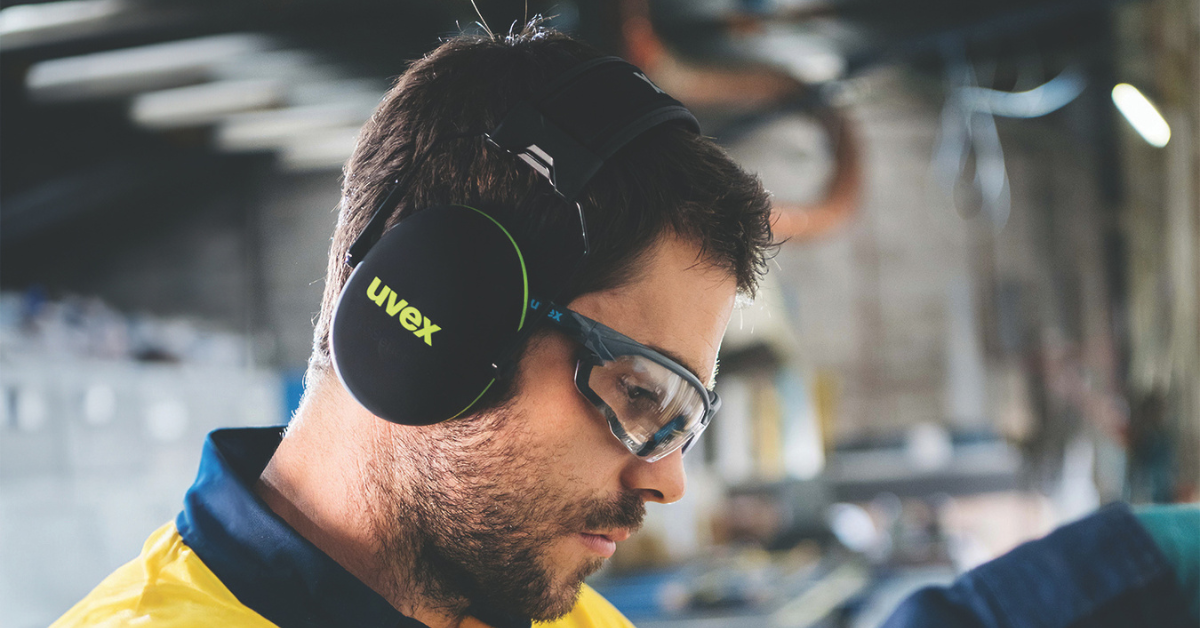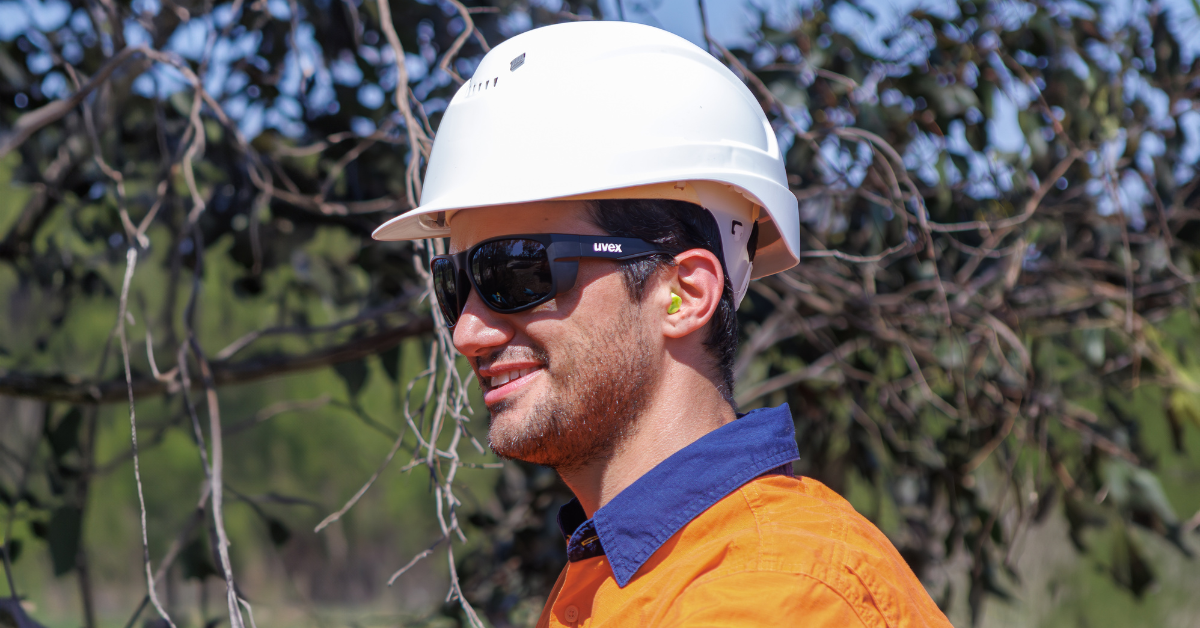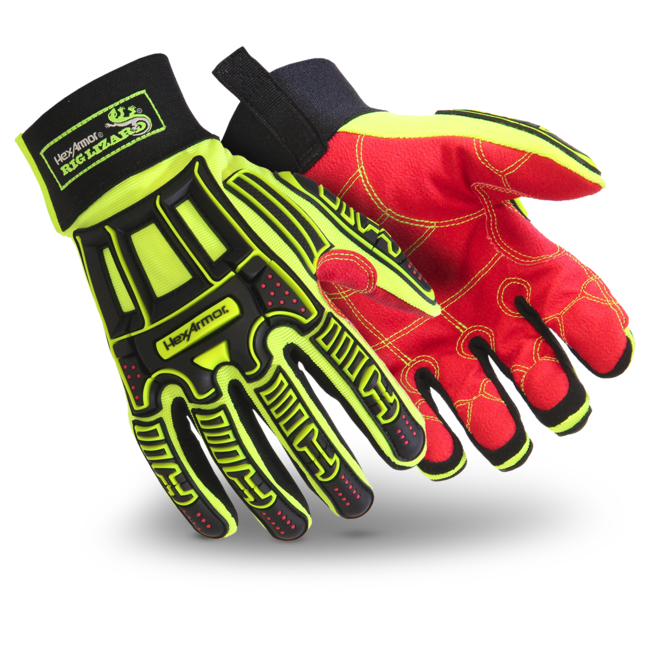The cost of workplace hearing loss – and how to prevent It
The statistics on workplace hearing damage make for grim reading. Hearing Australia’s Principal Audiologist, Karen Hirschausen says “more than 1.1...
| SHOP UVEX |
SafeWork regulations stipulate that when providing hearing protection to workers, they must not ‘overprotect’ the worker. Hearing protection that reduces (attenuates) too much sound, also cuts out important sounds such as speech and warning signals, potentially putting the worker at greater risk.
What is Hearing Overprotection?
SafeWork regulations state that the 8-hour equivalent continuous sound pressure level for a worker must not exceed 85dB(A). It is best practice to not just aim for an 8-hour equivalent continuous sound pressure level of 85dB(A) but to a level lower than this, because a constant noise source of 85dB(A) over time will cause hearing loss.
On the opposite end of the spectrum is hearing overprotection. This occurs when a higher class of hearing protection is used than what is needed. Hearing overprotection indiscriminately reduces all sounds including important communication such as warning signals and speech which can be critical to protecting workers. Therefore, it is recommended that hearing protection not reduce sound to a level below normal human speech which is typically around 70dB(A).
Causes of Hearing Overprotection
Earmuffs in general tend to provide a higher level of noise reduction compared to earplugs. Earmuffs are often preferred by workers over earplugs for a variety of reasons including comfort and ease of wearability, however as earmuffs tend to have higher levels of attenuation there is an increased chance of the workers being overprotected. The other common cause of overprotection comes from often well-intentioned managers seeking to have the highest class of protection for their workers for the greater level of perceived protection even when the working environment does not have high continuous noise levels that require this class of protection.
Effects of Hearing Overprotection
There are many consequences of hearing overprotection including:
Solutions for Hearing Overprotection
To avoid overprotection in your workplace, a noise assessment by a trained person must be conducted to find your dominant noise sources. Once the noise sources are found, a noise map can be generated showing how noise levels are distributed throughout the work area. A noise map will help determine the level of hearing protection needed for workers. If certain activities generate substantially higher levels of noise, a task-specific hearing protection protocol should be implemented. If noise levels are steady across the shift and or site, a single type of hearing protector may be appropriate.

Real Active Listening (RAL) - active perception of the environment and maximum hearing protection
For noisy work environments where communication is also important, the uvex aXess one earmuffs with the Real Active Listening (RAL) feature provide noise attenuation while the integrated external surround microphones listen to ambient noise in the environment including speech, important warning signals and conduct this critical information inside the earmuff capsule at a safe level for the worker.
The uvex aXess one’s RAL feature helps workers forget that they are wearing hearing protection as they still feel as a part of their work environment. The uvex aXess one earmuff has an attenuation of SLC80 27dB (Class 5) and includes sound level limiters and impulse noise attenuation.
Staying connected can also be a critical safety requirement in the workplace. The uvex aXess one also has Bluetooth® connectivity that allows connection with two devices at the same time so wearers can access their phones, laptops, or other smart devices, which helps them stay connected and safe.
uvex hi-com – earplugs designed for protection and maximum comfort
For environments where noise levels are only marginally over the limit set by the SafeWork regulations and where earplugs are preferred, lower class earplugs are an ideal solution. The uvex hi-com earplugs are a lower-class earplug specifically engineered for work environments that require high levels of communication. The uvex hi-com earplugs have a SLC80 rating of 16dB (Class 2) and are designed to protect the wearer from harmful noise while allowing speech perception. This keeps the wearer comfortable for long periods time. The uvex hi-com are also available in two colours; lime for high visibility and fawn for when discreteness is preferred.
Hearing overprotection is a common and potentially serious workplace safety problem. Hearing protection selection should follow a comprehensive site noise assessment to determine the correct level of protection required to minimise the potential for hearing damage but allow workers to hear critical information. If you would like to learn more about selecting the right hearing protection for your workers, please contact uvex for further information from their technical team.

The statistics on workplace hearing damage make for grim reading. Hearing Australia’s Principal Audiologist, Karen Hirschausen says “more than 1.1...

Safety glasses are a critical part of personal protective equipment (PPE) on worksites Australia-wide. But the trend towards stylish safety glasses...

A guide to ISEA 138 impact standards Following the inclusion of a performance standard for back of hand impact protection in the revised...